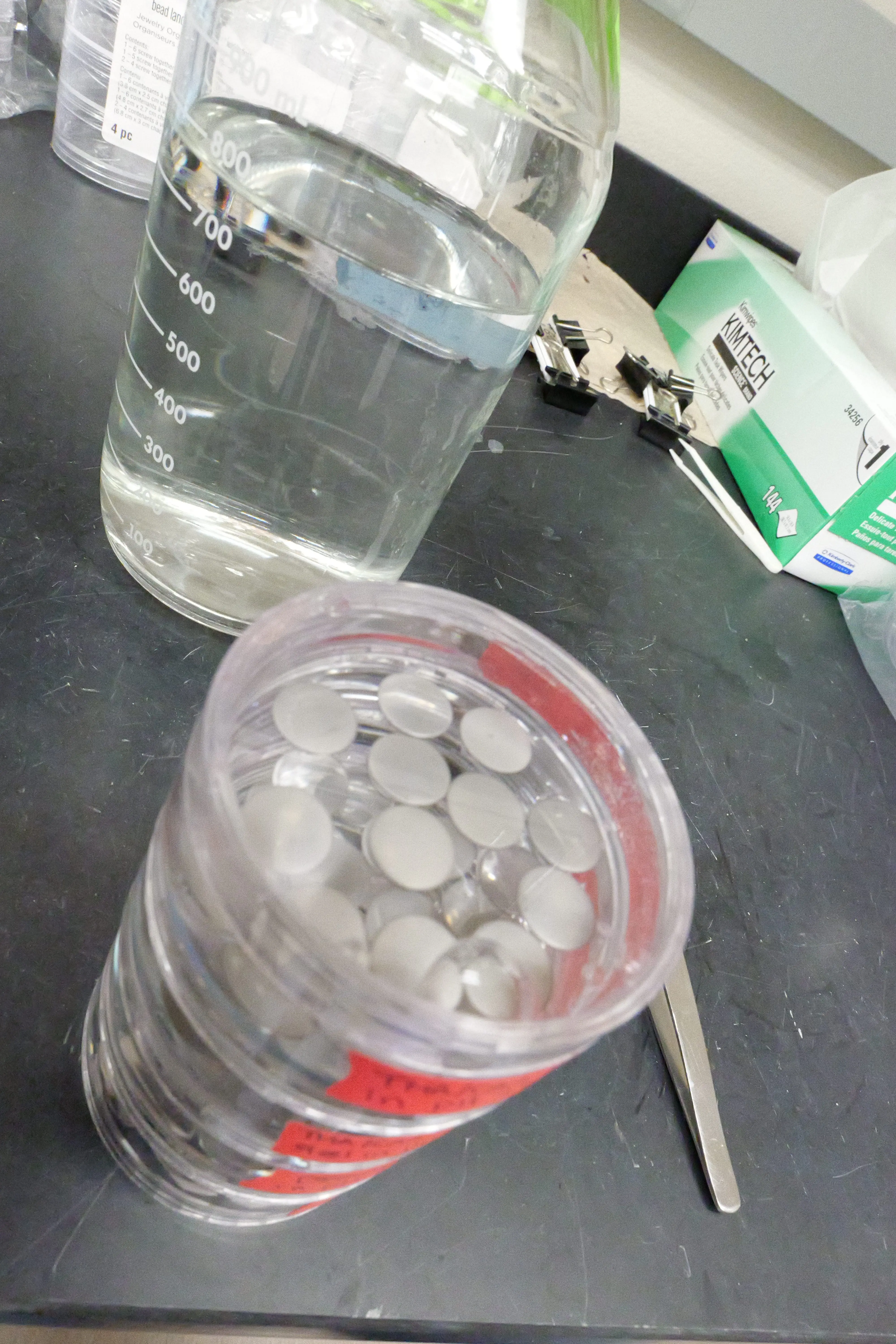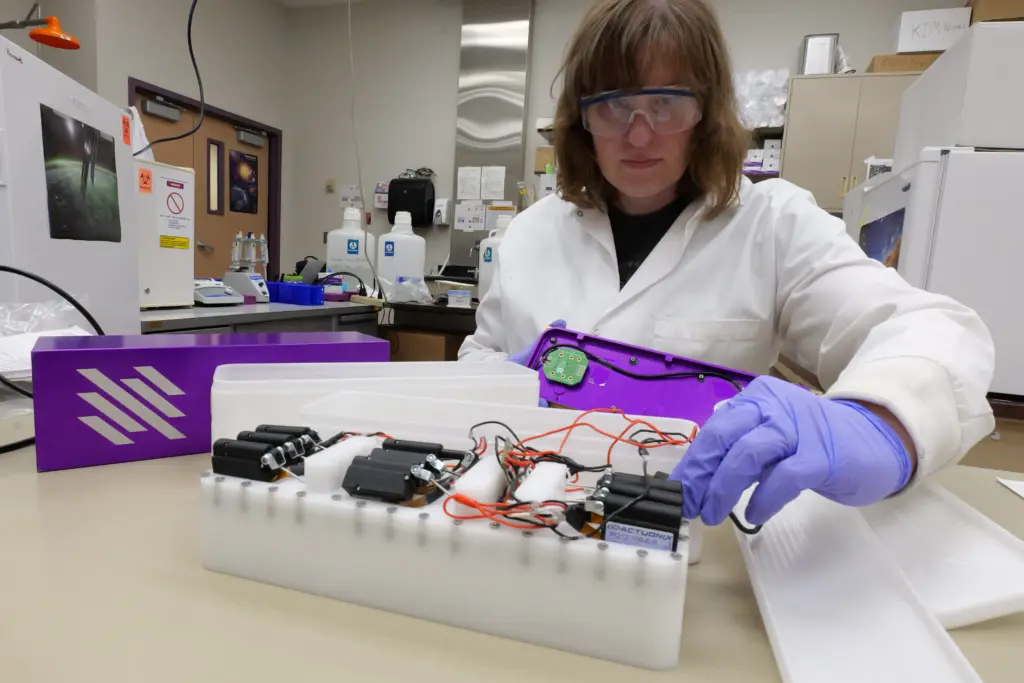
MOSCOW, ID – Research developed at the University of Idaho will soon be tested aboard the International Space Station (ISS) as part of NASA’s efforts to improve astronaut health and mission success.
The project, led by U of I chemical engineering graduate student Adrienne Shea and Professor Matthew Bernards, focuses on creating a bacteria adhesion-resistant coating for use in spacecraft. The coating, made of nonfouling polymers, prevents proteins and bacteria from clinging to surfaces, helping reduce the spread of infection in closed environments like the ISS.
To study how the material performs in zero gravity, coated stainless steel samples will be housed in a protective chamber designed by Shea and sent to the ISS on Sunday, Aug. 24. The launch is scheduled for 2:45 a.m. Pacific time and will be streamed live at nasa.gov/multimedia/nasatv. Once on board, two strains of bacteria commonly found in wastewater systems on the ISS will be introduced to the samples. The experiment will remain in orbit for 30 days before returning to Earth for analysis.
“We’re essentially replicating — in an enclosed, protected space — what an astronaut might come into contact with within their drinking water system,” said Shea, a native of Columbus, Indiana. “Working on a project that’s headed to the ISS is an incredible opportunity, not just because it’s space-bound, but because the work we’re doing has real potential to improve human health.”
Future phases of the research could extend the coating to larger surfaces such as water piping, a critical component for long-term space travel where reliable clean water is essential. Bernards noted that the technology could also improve water distribution systems on Earth by preventing bacterial buildup.
“This research is crucial not only for protecting astronaut health during long-term space missions, but also for advancing water distribution systems here on Earth,” Bernards said.
Beyond spaceflight, the polymers show promise in medical applications. Their nonfouling properties could improve biomedical devices by preventing the body from rejecting implants such as joint replacements or organ transplant materials.





